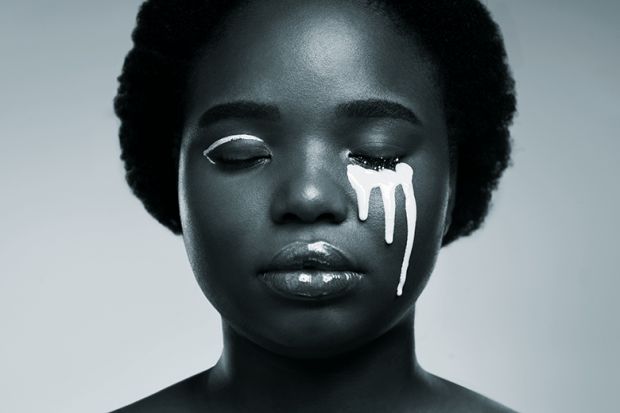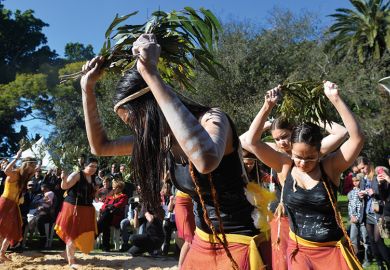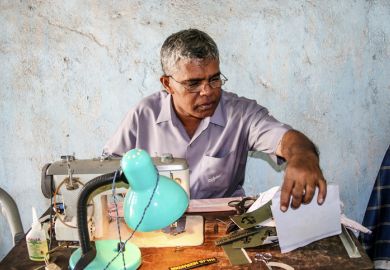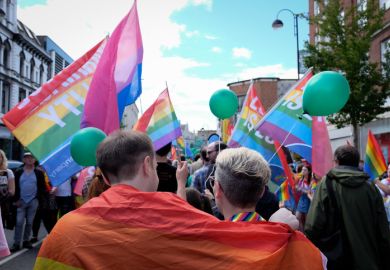Spring, 2017. The pain reverberates throughout the five small liberal arts campuses huddled on the edge of Los Angeles County that make up the Claremont Colleges. Students slowly trickle into my class, eyes rimmed red, bodies hunched over. They drag themselves to the chairs that have been set out in a circle and heave themselves into their seats.
The air is heavy with grief. I am surprised, as this particular class is usually upbeat and eager to learn, discussing the readings before I even walk in. Today, the room is silent. Occasionally one student takes the hand of another, squeezing it for reassurance. No one meets my eyes. As I look around the room, I see one seat that is noticeably empty.
“Does anyone know where Abigail is?” I ask, finally breaking the silence. (All names have been anonymised to protect confidentiality.)
Abigail is one of the most enthusiastic participants in class, often drawing on her lived experience of power imbalances. A leader in the Black Student Alliance, she regularly challenges her classmates to rethink their conceptions of racism, and has been writing about institutional racism and its effect on health for my class. At the mention of her name, two students break down, releasing a flood of tears.
“Professor Mahdavi, don’t you know? Abigail was the one who found her,” says Dani, as he sees the confused look on my face. The rest of the class stares at me in disbelief. How has the news not made its way to me, they seem to be wondering. As I work up the courage to ask, various students speak up, some between sobs, to fill me in on what has happened.
“I can’t believe they didn’t tell professors, but it’s important you guys understand,” says Denise.
“Abigail was one of Tatissa’s roommates,” says Dani.
“Tatissa is the student who was found dead in her dorm room over the weekend,” says Neeti.
“Not just dead. It turns out that she took her own life,” interjects Dani softly.
I sit back in my chair trying to process what I have just heard. Like Abigail, Tatissa Zunguze was active in the Black Student Alliance and was one of the leaders of a group called Wanawake Weusi, which describes itself as a “collective to support women of African descent at Scripps College in endeavors educational, cultural, personal, and spiritual”. Both women had been student resident advisers and had worked tirelessly to create spaces for dialogue about diversity and inclusive excellence on campus. I keep trying to process what I have heard, to take in the fallen faces of my students and to make sense of the moment.
“It was too much for her, it got to her,” says Sophia, biting back tears.
“It’s too much for all of us, too much for any of us who are doing the work. This is what happens to people who keep trying to do the work, but who are suffocated by institutional violence and institutional racism,” says Denise.
Neeti takes a deep breath, attempting to steady her shaking voice. When she speaks, she chokes on her sobs, causing her to pause at various points. “Tatissa was an incredible human being. She spoke up for so many of us, not just Black students, but all students of colour. She told our stories, spoke our pain. Her loss multiplies our pain by thousands.”
“And when are we going to talk about Willie?” interjects Yasmin. She is referring to the fact that in February of the same year, Willie Zuniga, a 21-year-old Harvey Mudd senior, was also found dead in his dorm room. Although the cause of death had not been announced, there had been speculation that it was suicide. Zuniga was also a student of colour active in movements to foster diversity and inclusivity.
“You speak truth, Yasmin. Willie’s death was horrible, and it too was erased, or at least downplayed by the institution,” says Dani, returning to his seat. He has remained so calm throughout this conversation, and he is always so even-tempered, always the peacemaker. But I can see that he is visibly shaken and trying to be strong for his classmates.
“Professor, this is what it is to be a POC [person of colour] here in Claremont trying to do the work. This is the pain, every day. This is the burden of diversity work. So, let’s talk about this emotional labour. This is a class about labour, race and violence, so let’s talk about it. Let’s talk about it right here, right now,” says Sophia, powerfully.
“Yes, let’s,” says Dani as he begins to pack his bag. “But not today. Today let’s just sit in the pain together, and tomorrow, or another tomorrow, let’s try to deconstruct it.”
This scene took place on the heels of a series of protests to support Black Lives Matter. Those protests had divided the community, inflicting pain throughout the campuses that was only heightened by the two tragedies. Students, faculty and staff grieved for the loss of two of our most talented, outspoken and beloved students. But the deaths were also seen as emblematic of larger systemic problems that have been festering at colleges and universities across the country. I was keenly aware that the Claremont Colleges were not alone in the depths of the challenges we were facing – this was and remains an international issue.
Although I had been conducting research on diversity, inclusion and the academy for some years, it was that moment when everything became crystal clear.
What I realised was that diversity, equity and inclusion (DEI) work was not working. We were failing, and students were paying the price. And the main reason for our failure was that we were focusing on and fighting about three false binaries.
As DEI efforts were pushed by students, faculty and staff, the immediate response was to turn our attention to compositional diversity. This brought up the first false binary of diversity versus excellence. Time and time again, even faculty who theoretically recognised the importance of diversity in a job search would return with shortlists of three white men, arguing that the “more diverse” candidates were just not as good. It was difficult to convince them that our measurement systems were broken and that their notion of a “strong candidate” was highly subjective.
This also extended to our push to accept more racially and ethnically diverse students. I remember all too well a faculty meeting where the leadership was proudly announcing the increase in diversity of our incoming student body. Yet more than one faculty member stood up to declare that they were worried that the incoming class “might not be ready” to take on the rigours of our ever-elite liberal arts colleges. What they totally failed to consider were the clear links between “preparedness” and class.
It is true that economically disadvantaged students (of colour or white) often do not have access to things such as college preparatory classes or the advance placement courses that allow pupils to pursue college-level studies while still at school. But that is not a commentary on their excellence or potential. Rather, it is a challenge thrown up by the structures of education – and one that we as educators have a duty to address. That some professors viewed “diverse” students as “less excellent” may have contributed to the hostile environment that students such as Tatissa and Willie faced.
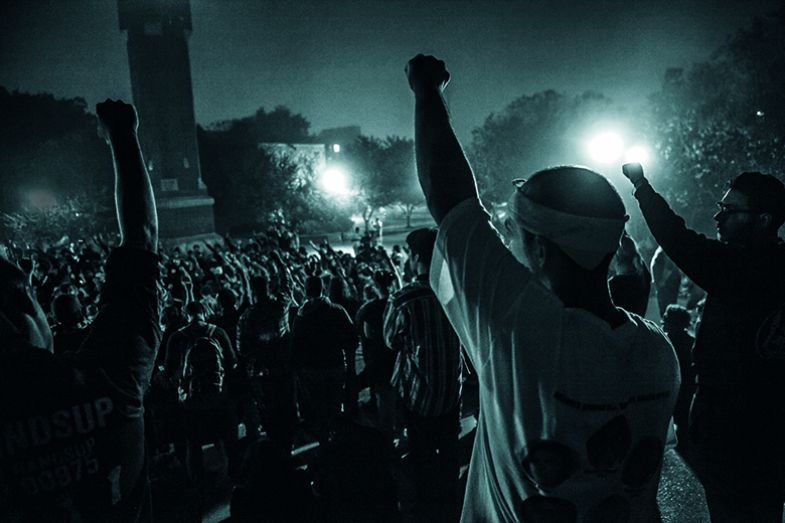
Closely related to the above trope is the second false binary of access versus excellence. The underlying worry articulated by faculty, board members and certain alumni is about allowing “different” kinds of students the keys to their kingdoms. Institutions that define themselves (more or less explicitly) in terms of whom they exclude have a particularly hard time with DEI work.
I will never forget a particularly harrowing alumni celebration day when I had moved from Pomona (one of the five Claremont Colleges) to another private institution, the University of Denver. Just weeks into my deanship, a group of older white male alums approached me and sombrely closed the office door.
“I’m worried, Professor,” they told me. “I’m worried about what this campus looks like – it’s not the school any of us went to.”
When I tried to make light of this and talked about the physical space of the campus, one of them interrupted me. “You know that isn’t what we are talking about,” he said.
His friend put a hand on his shoulder and shot me a disgusted look. “How are we going to expect her to understand?” he asked, jerking the top of his shiny balding head in my direction. “There is no way in the world I would have ever expected to see someone like her as a professor, let alone a dean at our alma mater.”
One of the many reasons I love being a dean now at Arizona State University is that our charter explicitly states that we measure ourselves by whom we include rather than whom we exclude. What our data make absolutely clear is that access and excellence are not opposed. Over the past five years, as the student body has grown more racially, ethnically and socioeconomically diverse, graduation and retention rates have also gone up. Being an accessible institution simply does not come at the expense of excellence.
The third, and in some ways most challenging, false binary is the one that pits diversity against academic freedom.
In 2016-17, a group of faculty members at Pomona sought to introduce a change to the bylaws. We wanted to add considerations of diversity to the tenure and promotion process. This had widespread support among students, who were eager to have an opportunity to weigh in about what a particular professor had done especially well – or not – in the field of DEI. Yet it led to a good deal of turmoil within and outside Claremont. Faculty pushed back, saying they could not possibly be asked to change their syllabi or pedagogical approaches, since this was an affront to academic freedom. Newspapers across the country lambasted us for an initiative (taken up, as it happens, by institutions nationwide not long afterwards) they saw as undermining the academic world order.
I had personal reasons for finding this deeply chilling. Less than 10 years before, I had been arrested in Iran because of my work on sexual politics since the 1979 revolution. As I was mid-lecture at a university in Tehran, I was pulled off the stage and taken in for questioning. Thirty-three days later, I was expelled from my native country, told never to return.
At that time, so many academics were held in Evin, Iran’s most notorious prison, that students had taken to calling the compound Evin University. One darkly joked that she would have to get herself arrested in order to finish her dissertation, since every member of her committee had been incarcerated. To me, this is what a real threat to academic freedom looked like – working in a country where any criticism of the regime could land you in jail.
But while the critics were wrong to pit academic freedom against DEI, we were also at fault for failing to communicate that DEI work was about creating a space for more conversations and research, rather than about restricting speech. Moreover, we were wrong in assuming that such work would be successful. As the Claremont conversation illustrates, it often isn’t. And that is the reason why I have come up with a new framework that builds on the successes of the past but also brings in many fresh approaches.
This framework is called JEDI, which stands for Justice, Equity, Diversity and Inclusion. Its hallmark is action. By emphasising “justice”, we also foreground meaningful structural change that goes well beyond compositional diversity and avoids tokenism. Through JEDI, we will empower our entire community to engage.
We will achieve this through a wide range of initiatives, which I describe in greater detail in a series of resources on the Times Higher Education Campus site. So I will only touch on the fundamental principles here. JEDI offers exercises to help all members of the university community explore their power and privilege – and acknowledge that these positions are fluid and ever-shifting. We will require JEDI statements from new hires, and faculty and staff seeking promotion, and make JEDI training a mandatory part of the induction of all students, faculty and staff.
We will also create a set of relevant reading material; create monthly events on topics such as how to infuse JEDI principles into your syllabus; and host workshops on how to write (and read) diversity statements. And, crucially, we will require that all students take a course on the dynamics of difference and power, while offering a range of other courses on related themes. Through these linked steps we are confident that we can implement structural change.
It has been common, among those committed to diversity work, to experience a sense of paralysis about what actually to do. I have watched leaders flail even in talking about this work – getting lost in the alphabet soup of DEI, OEI, EDI or, worst of all, DIE. I believe that JEDI can take us beyond all that and form the basis for a movement, a new way of thinking about the changes that each of us can implement. In the academy, where we have a mission to educate coming generations to change our world for the better, it is imperative that we lead by example.
Pardis Mahdavi is dean of social sciences at Arizona State University. Her books include Passionate Uprisings: The Intersection of Sexuality and Politics in Post-Revolutionary Iran (2008) and Gridlock: Labor, Migration, and Human Trafficking in Dubai (2011).
POSTSCRIPT:
Print headline: Most diversity work is not working
Register to continue
Why register?
- Registration is free and only takes a moment
- Once registered, you can read 3 articles a month
- Sign up for our newsletter
Subscribe
Or subscribe for unlimited access to:
- Unlimited access to news, views, insights & reviews
- Digital editions
- Digital access to THE’s university and college rankings analysis
Already registered or a current subscriber? Login
